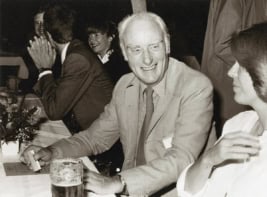Physics World Online Lecture Series

In 1957 Hugh Everett III believed that he had solved the infamous measurement problem in quantum mechanics by explaining probability as an illusion in an evolving, deterministic universe of universes. His “relative state” theory horrified Niels Bohr, who treated Everett’s doctoral thesis (written under the guidance of John Wheeler) with disbelief and scorn.
Everett’s theory was reborn as the “many worlds” interpretation of quantum mechanics in the 1970s. Yet, despite his idea’s growing popularity, Everett never wrote another word about quantum mechanics. Instead, he worked on military operations research, designing nuclear missile targeting software. In this lecture, investigative journalist and Everett biographer Peter Byrne traces how Everett’s theory evolved over the course of his often-troubled life.
Date: Thursday 14 October 2010
Speaker: Peter Byrne
Peter Byrne is an investigative reporter and science writer based in northern California. His biography of Everett – The Many Worlds of Hugh Everett III: Multiple Universes, Mutual Assured Destruction, and the Meltdown of a Nuclear Family – was published in mid-2010 by Oxford University Press.
Moderator: Margaret Harris, reviews and careers editor of Physics World
The video runs for approximately 60 minutes.



